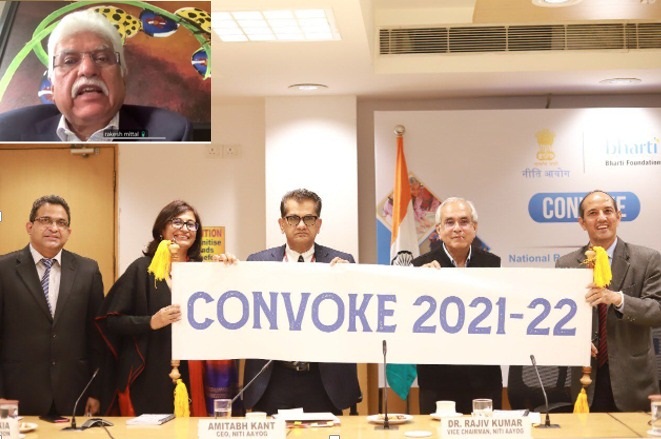The Covid-19 pandemic necessitated a swift move to digital-focused business strategies and transactions due to safety, business discovery, marketing and logistical considerations. Even the informal and micro business segments, that traditionally relied on manual and face-to-face transactions, had to adapt to survive in one of the most arduous times in recent history. However, what started off as a necessity now has the potential to spur personal income, business and community growth for India’s nano and micro entrepreneur segment, which makes up around 6.3 crore enterprises, and over 11 crore people working in them.
Experimenting with digital payments
Perhaps the biggest change in both rural and urban settings across micro businesses has been the shift towards UPI and digital payment platforms like PayTM, PhonePe and Google Pay. Paan stalls, auto-rickshaw drivers and neighbourhood vegetable sellers all accept payments via these platforms on a daily basis – due to a rising demand for touchless payment and social distancing.
Nano and micro entrepreneurs, including farmers, found that digital payments make regular finance activities like paying bills, house rent and other essentials easier without having to leave their homes. For example, farmers who are now being supported by innovative finance initiatives provided by the REVIVE Alliance, would earlier travel 100 kilometres to reach the nearest bank to make deposits, while completing paperwork for bills would entail an entire day spent at the electricity office. When the pandemic struck, they switched to UPI and digital banking, where basic banking services could be conducted at any location with the tap of a finger. These farmers now regularly request money through online payments, and pay their bills digitally.
Digital payment platforms are also a key part of the delivery mechanism for the financial support provided by REVIVE and other such platforms, showcasing the criticality of digital tools in socio-economic empowerment interventions.
Another important aspect of cashless transactions is security. Micro entrepreneurs have reported that not having to carry around their cash – which makes their hard-earned money vulnerable to theft – helps them feel safer and engenders greater trust in digital banking.
Digital tools such as social media for marketing and business discovery
During our cohort outreach as part of the REVIVE Alliance, there have been many instances where microentrepreneurs have started utilising social media as a low cost and targeted means of advertising to their customers. This is particularly crucial for female business owners, for whom societal and cultural restrictions make it much tougher to market to a bigger audience. Beauty-preneurs, for example, were looking for new ways to conduct business from home during the pandemic and turned to digital media to spread awareness about their business and to upskill themselves on make-up trends. Asha, one such beauty-preneur, talked about how she uses Instagram actively to market her parlour to ladies in and around her village with the help of hashtags and images.
Increasing Digital Inclusion and Uptake
Many, however, continue to have reservations about these technologies. This could be due to uneven access to the internet and smart devices, lack of knowledge about how digital technologies work, privacy concerns about personal and financial information – all of which need to be addressed for maximal digital inclusion.
To illustrate, today’s small kirana stores face immense competition from large online and offline players. Technology and digital access can help kiranas compete with these larger companies. REVIVE has a component where Samhita-CGF partners with retail technology firms to enable the entire digital management of a kirana store from providing point of sale devices, upskilling through online platforms, access to suppliers and so on.
However, while this provides them with the necessary tools, the partners have embedded a mechanism to ensure the adoption and stickiness of these digital tools in the long run. Here, REVIVE utilises innovative finance tools such as returnable grants and pay-for-performance to incentivise small kirana store owners to use and adapt to the various platforms and technologies.
What we are witnessing right now is a paradoxical acceleration in digitisation coupled with a digital divide. There is a strong case to improve accessibility and awareness among hitherto excluded workers and entrepreneurs sections through targeted efforts so that everyone can reap the benefits of digitisation. From digital payments and marketing opportunities to greater knowledge about banking and other topics, digitisation has helped everyone become more connected and gain more control over their livelihoods.
Views of the author are personal and do not necessarily represent the website’s views.
 Bhavya Kharoo is about to graduate from Tata Institute of Social Sciences, Mumbai with a Master’s in Development Studies. She was formerly a Young India Fellow at Ashoka University, Delhi and has completed her undergraduate education in Economics Honours from the University of Delhi. As an ardent feminist and a lover of research, she has worked on a study of her own along with some of her friends; the objective was to study the implications of gender and space in Indian Metropolises and is based on a mapping exercise which looks at people’s perceptions of how women occupy public space. She is currently working on another paper, on the lives of migrant women and she is working towards including more creativity in her research work.
Bhavya Kharoo is about to graduate from Tata Institute of Social Sciences, Mumbai with a Master’s in Development Studies. She was formerly a Young India Fellow at Ashoka University, Delhi and has completed her undergraduate education in Economics Honours from the University of Delhi. As an ardent feminist and a lover of research, she has worked on a study of her own along with some of her friends; the objective was to study the implications of gender and space in Indian Metropolises and is based on a mapping exercise which looks at people’s perceptions of how women occupy public space. She is currently working on another paper, on the lives of migrant women and she is working towards including more creativity in her research work.
Thank you for reading the column. Please drop a line and help us do better.


